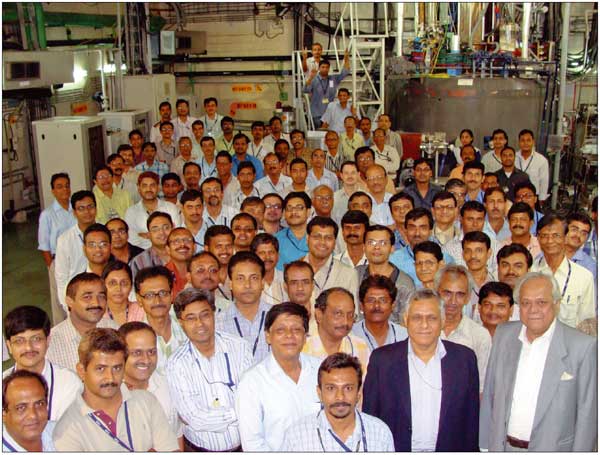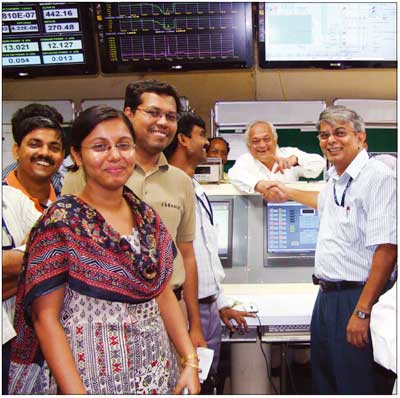
A beam of Ne+3 has been accelerated by K-500 Superconducting Cyclotron at the Variable Energy Cyclotron Centre (VECC), Kolkata, up to the extraction radius of 650 mm. At 3.00 a.m. on 25 August, the beam probe monitored a beam current of around 40 nA. This measurement was confirmed by a beam viewer that uses a boroscope and through the observation of neutron and gamma radiation by the radiation monitor located outside the superconducting magnet. The energy of the Ne+3 beam at a radius of 650 mm is calculated to be 88 MeV. The presence of beam was further confirmed by activation analysis of an aluminium target probe in tests at a radiochemistry laboratory.
VECC’s superconducting cyclotron is the most advanced, hi-tech accelerator ever constructed in India. The cyclotron’s main structure, a 100-tonne iron-core superconducting magnet, is the largest in the country and has been operating virtually non-stop for more than three years. It produces a magnetic field of around 5 T over an area of about 1.3 m2. Its cold mass of about 8 t, consisting of the niobium-titanium superconducting coil and stainless-steel bobbin, has been kept continuously cooled at –269 °C inside a sophisticated cryostat. More than 35 km of superconducting wire was used to construct the coil at VECC. About 300 l of liquid helium is required to keep the coil cooled to its operating temperature, together with hundreds of litres of liquid nitrogen at –195 °C, every day. It is the first large-scale iron-core superconducting system in India.

Image credit: VECC.
The “3-Dee” RF system, which provides the acceleration kicks to the beam, has also functioned very satisfactorily. This system delivers more than 100 kW of radiofrequency power per cavity.
The main control room of the accelerator has been a hive of activity since 11 May when the first beam of low-energy charged particles was injected for acceleration. Since then all of the cyclotron systems have undergone continuous endurance tests. At the same time, the cyclotron team has also carried out all possible critical tests to ensure that the cyclotron is functioning with a circulating internal beam.
With very few such superconducting cyclotrons in the world, VECC has joined an exclusive club. The accelerator’s high-energy beams will be used for frontline basic and applied research in nuclear sciences. The facility will soon be dedicated to the nation and will open for research to the international community.







